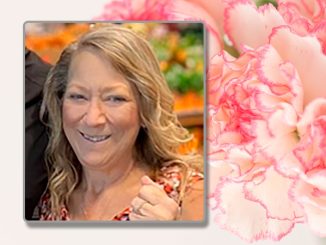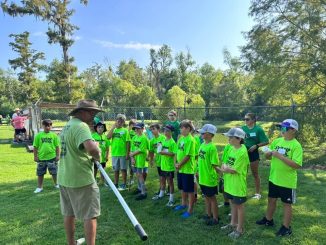
60 percent of termite samples in parish from most destructive species
Among the evening dusk of these early summer days, swarming termites are being spotted, flying together near street lamps throughout neighborhoods – especially on the West Bank of St. Charles Parish.
County Agent Rene’ G. Schmit says that there is no one area that stands out as dominant, but points out that there are some areas more prone to attracting Formosan subterranean termites, which fly between early evening hours and midnight during still nights from mid May to early July.
“I receive an average of 30 to 40 samples each year for insect identification, with 12 to 15 actually being termites,” Schmit said. “Many of our larger cases come from the communities of Ama, Hahnville, Taft, Luling and Paradis.”
According to the LSU AgCenter, about half of the homes infested in these areas are older homes – 50 years or older, on pillars – and the other half are newer homes within a 25-year range on pillars and slabs.
“In most cases, the homeowner had not conducted or maintained a home barrier treatment,” added Schmit. “But what is of interest to us is that 60 percent of the termite samples are of the Formosan species – which are the most destructive. They can destroy wood at twice the rate of native subterranean.”
Schmit says that native termites have been around for hundreds of years, while the Formosan have only been here a short while, invading St. Charles approximately 12 years ago.
“Our parish provides the perfect climate for termites to thrive,” he said. “The environment that is ideal gives an unending source of wood, whether constructed or laying around on the ground, and an ample supply of moisture.”
Native and Formosan subterranean termites, when they swarm, do not fly very far and usually come from a termite colony that is nearby, several years old and well established.
“Swarms of termites do not, in themselves, cause damage to a home and finding a few in the home during a swarm may not necessarily mean termites have taken up residency,” Schmit said. “However, finding large numbers of flying termites that suddenly emerge inside the home where no outside swarm has been detected will generally indicate a possible infestation.”
Schmit says that detecting a termite problem should involve consultation from a licensed pest control operator for proper inspection, identification and treatment.
“It may be necessary that a combination of treatments would need to be applied, especially where Formosan termites are identified,” he said. “Although there are a wide variety of do-it-yourself treatments, most are short lived and slow acting.”
To reduce risk for attracting termites, Schmit suggests considering the following maintenance tips:
• Reduce moisture
– Provide for gutter downspouts to drain water away from your house, including air conditioning condensate.
– Promptly fix any leaks in roof, gutters and plumbing.
• Eliminate earth-to-wood contact
– Make sure wood is not in direct contact with the soil.
– Outdoor wood porches and wood steps should be placed on a concrete base at least 6 inches above grade.
– Store woodpiles or firewood away from the house and make sure they are raised off the ground.
– Keep shrubs and flower gardens at least 12 inches away from the house.
• Minimize the amount of raw wood available for termites to eat
– Treat unpainted exterior wood with an oil based wood preservative or borate product such as Bora-care.
-Replace rotted or destroyed structural wood with properly pressure treated wood.
• Inspect your property often for termites
– Look for signs of infestation inside and outside of structures – mud tubes along the slab, siding, especially in crawl space, attic and bathroom.
– Accumulation of termite wings indoors or swarms emerging from the building exterior.
For more information on termites and termite control, contact Schmit at 985-785-4473.




Be the first to comment